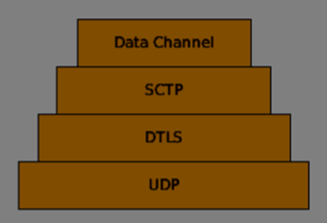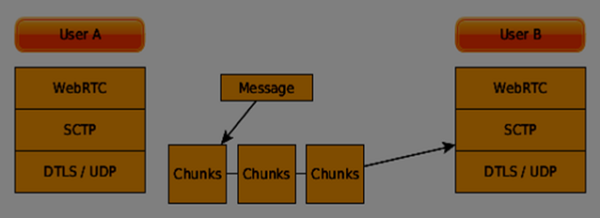
- WebRTC - Home
- WebRTC - Overview
- WebRTC - Architecture
- WebRTC - Environment
- WebRTC - MediaStream APIs
- WebRTC - RTCPeerConnection APIs
- WebRTC - RTCDataChannel APIs
- WebRTC - Sending Messages
- WebRTC - Signaling
- WebRTC - Browser Support
- WebRTC - Mobile Support
- WebRTC - Video Demo
- WebRTC - Voice Demo
- WebRTC - Text Demo
- WebRTC - Security
Stream Control Transmission Protocol
With the peer connection, we have the ability to send quickly video and audio data. The SCTP protocol is used today to send blob data on top of our currently setup peer connection when using the RTCDataChannel object. SCTP is built on top of the DTLS (Datagram Transport Layer Security) protocol that is implemented for each WebRTC connection. It provides an API for the data channel to bind to. All of this sit on top of the UDP protocol which is the base transport protocol for all WebRTC applications.

The developers of WebRTC knew that every application would be unique when using the data channel. Some might want the high performance of UDP while others might need the reliable delivery of TCP. That is why the created the SCTP protocol. These are the features of SCTP −
There are two modes of the transport layer − reliable and unreliable
The transport layer is secured
When transporting data messages, the are allowed to be broken down and reassembled on the other side
There are two order modes of the transport layer − ordered and not ordered
Flow and congestion control are provided through the transport layer
The SCTP protocol uses multiple endpoints (number of connections between two IP locations), which sends messages broken down through chunks (a part of any message).

So you must understand that the data channel uses a completely different protocol than the other data-based transport layers in the browser. You can easily configure it up to your needs.